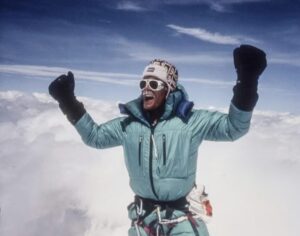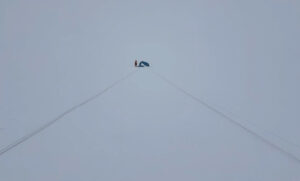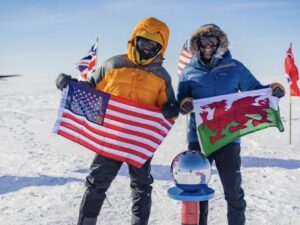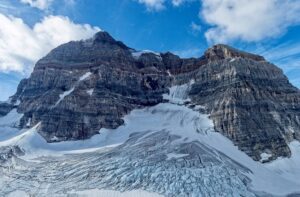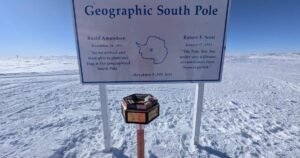Kayaking the Amazon river is a huge exploration feat. The challenge involves surviving rapid white waters, deadly wildlife, tropical disease, political instability, altitude and distance.
Only 11 people (see note) have kayaked the entire 6800 km from its source at 5000 meters altitude in the Andes mountains down to the Atlantic ocean.
This piece should have been about those 10 men and 1 woman. But it’s not.
It’s about two who did fractions of the trip and got Guinness, Wikipedia and media to validate achievements that didn’t belong to them.
In length the Amazon river is a close second to the Nile, but in massive force it’s unrivaled on this planet. Ignited by glaciers in the Andes, fueled by countless streams and bloated by humidity from the largest rainforest in the world – the Amazon discharges more water than the Congo, Ganges, Yangtze, Mississippi and Nile combined.
Start of the Amazon
The start of a river begins with a single drop of water and where that first droplet kicks off the mighty Amazon exactly is under debate. Apurimac or Mantaro, at 5000 meter altitude in Peru are the most popular candidates and both are recognized as valid starting points by Adventurestats.com.
The Amazon Crux
The first 1000 km, the white waters, are the crux of the river. With an altitude drop of 4500 meters the stretch presents a demanding descent until the flow mellows out into the remaining gentle run with fishermen casting nets and kids taking swims on the shores.
The difficult part has an altitude loss of 4.5 meter/km. Compared to the rest of the river at only 0.7 meter/km, that’s 6 times as steep.
The mountain analogy would be to walk a gentle slope and then face a vertical wall.
The Amazon Kayakers
11 people have kayaked the full 6800 km stretch by human force. Another 11 made it all the way but with a catch (part motorized, avoiding white waters etc). Full list here.
This story is only about two kayakers though:
Helen Skelton, UK
Marcin Gienieczko, Poland
The Amazon Theft part 1: Distance and Altitude
Helen Skelton claimed to have kayaked the Amazon river in 2010. From Wikipedia, “In early 2010, Skelton kayaked the entire length of the River Amazon”.
Marcin Gienieczko told Explorersweb in 2015 he had ” navigated the entire Amazon River”.
Let’s see what they actually did.
Altitude (white waters):
Skelton started from Nauta, Peru at an altitude of 100 meters, thus avoiding 98% of the Amazon altitude drop.
Fun fact about Nauta. In 1853 a
paddle steamer made it up to Nauta.
Gienieczko started at 535 meters, thus avoiding 90% of the altitude.
Length (6800 km)
Skelton did 3200 km and Gienieczko 5800 km.
Summary:
Skelton did less than 50% of the length and 2% of the altitude but claimed a full length Amazon river run.
Gienieczko did 85% of the length and 10% of the altitude but claimed a full length Amazon river run.
Check out Amazon Elevation Profile at Adventurestats.
The Amazon Theft part 2: Longest Kayak Solo
Both Skelton and Gienieczko further claimed they had managed to solo WORLD record distances.
They even got validation from Guinness Book of Records, World Record Academy, BBC, the Telegraph, the Mirror etc.
World Record Academy: Helen Skelton has now TRIPLED the world record for the longest solo kayak journey.
Guinness: “The longest solo journey by canoe (kayak) is 5,573 kilometres (3,462.89 miles) and was achieved by Marcin Gienieczko (Poland) who travelled from Atalya, Ucayali, Peru to Belém, Para, Brazil between 4 June and 1 September 2015.”
Skelton’s 3,200 km and later Gienieczko’s 5,537 km are far from any records. Below just a few examples (and there are many more).
7,200 km, 1985, Ed Gillet (along South America’s coast)
25,000 km, 2009 Freya Hoffmeister (around Australia)
The Amazon Theft part 3: Solo
First a definition from Adventurestats:
The style label “solo” requires that the explorer is alone and receives no outside assistance. A solo performance thus requires the assist label “unassisted”.
A solo is when you are completely on your own and receive no outside assistance. This definition is held true in sailing, ocean rowing, kayaking, mountaineering, polar skiing and more.
Skelton had a crew following her, providing food and comfort during the trip. That clearly disqualifies her from a “solo” label.
Gienieczko not only took support along his “solo” stretch, but had a guide and even the actual distance is questionable, which has been investigated by journalists here.
Adventure Plague
Enabled by ignorant (at best) media and authority, people like Skelton and Gienieczko are publicly grabbing achievements that belong to others.
The thefts have deep consequences for true champions: stealing their sponsorship and recognition.
Skelton and Gienieczko lacked the skills to kayak the white waters, were unable to take care of themselves and went only parts of the Amazon river.
Still, they got world recognition and they are far from alone.
Guided tourists routinely fly to the North Pole, ski in its vicinity for a few days and claim the same feat as those who crossed from land. The same goes on at the South Pole. Others pretend the highest peak on each continent are the tallest mountains in the world. Rowers from US to Hawaii claim the entire Pacific Ocean and the list goes on.
Money and media contacts have become the most important exploration “skills” today. It damages not only the spirit of adventure but corrupts society as a whole.
*Editor’s note: Story corrected June 1, 9.00 am PT: Only 11 people have kayaked the entire length, not 13 as earlier stated.

